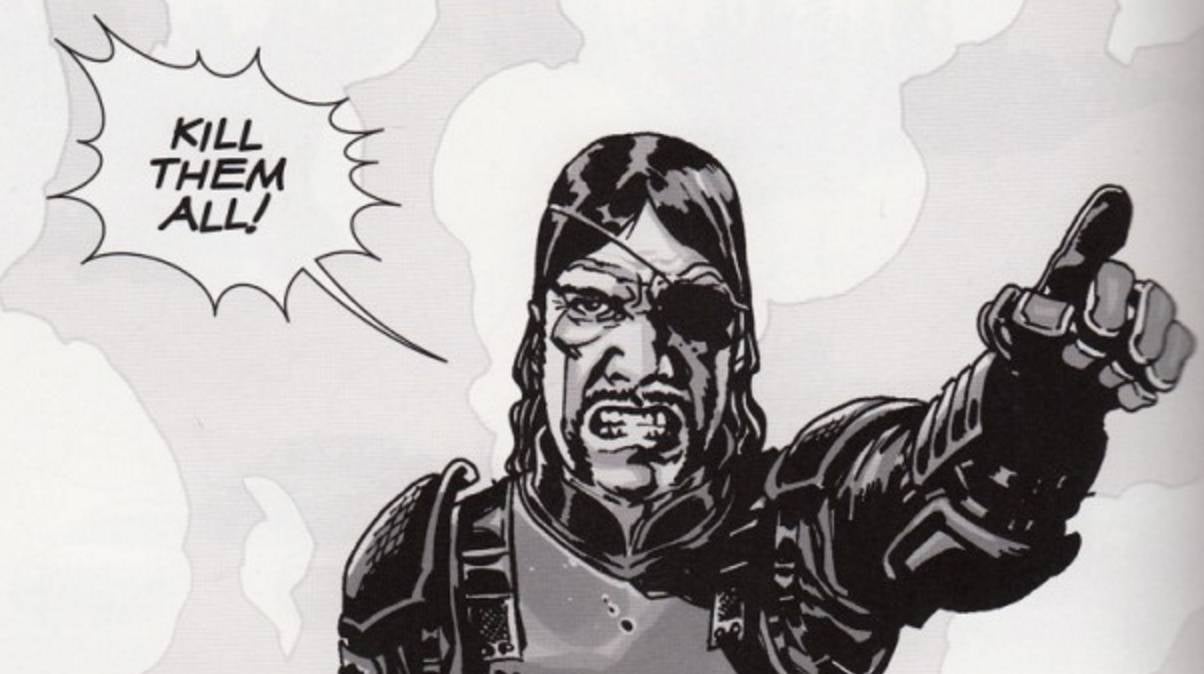
The Walking Dead has hit a monumental landmark this week: 150 issues. That’s nothing to scoff at no matter what the circumstances, but The Walking Dead doesn’t require any asterices next to this achievement. It has been going strong since issue one without a single reboot or renumbering. Even more impressive is that 144 of those issues have featured the same creative team, since Charlie Adlard joined Robert Kirkman as the new series artist at The Walking Dead #7. Perhaps the most incredible thing about reaching #150 is that The Walking Dead is a creator-owned comic, making it one of only a handful of such series to run this long and this consistently.
Videos by ComicBook.com
Kirkman and Adlard have brought Rick Grimes a very long way from the hospital he woke up in in The Walking Dead #1, and it doesn’t look like they plan to let his story end any time soon as his greatest battle yet continues to grow worse both inside and outside his community. 150 issues still represents a lot of comics though. At this new turning point in The Walking Dead, it’s worth taking a look back at the greatest story arcs of the series so far. These are the five that we feel represent The Walking Dead at its absolute best.

1. “Days Gone Bye”
The Walking Dead #1-6
There’s a reason that The Walking Dead was able to find success at Image Comics before Image Comics was the hit-producing comics publisher we know it as today. The first six issues of the series are fantastic. In addition to introducing many readers to the gloriously gross artwork of Tony Moore, it packed a lot of story into its pages and ended on a truly fantastic twist.
It’s possible that if The Walking Dead had simply ended after #6, it might still be very fondly remembered and could have easily been adapted into a movie. That it continued for so long after speaks to the idea machine that is Robert Kirkman. All of the long-term success can be traced back here though to a story that was packed with loads of different characters and simmering subplots, plenty of creepy situations and creepy kills, and the best ending of any story arc of The Walking Dead yet. It’s still a sad, sickening reminder that killing the living is something far worse than killing the dead.

2. “Fear the Hunters”
The Walking Dead #61-66
It took The Walking Dead some time to recover from the events of The Walking Dead #48 where more than half of the cast was killed. “Fear the Hunters” is the story where the series became the zombie comic to follow again. Beginning with a horrible issue featuring a pair of shocking deaths amidst the recently reformed survivors, it quickly went somewhere even darker: cannibalism.
This wasn’t the first or last time Rick and his comrades would encounter an opposing group of truly heinous humans, but this one feels unique. Not only were the Hunters crossing a new taboo, but they were defined by their humanity. Rather than being a refined machine of evil, they were weak, pathetic, and entirely sympathetic. What that, in turn, reflects about the heroes is even more terrifying. Atop this fascinating new set of antagonists, “Fear the Hunters” features a truly heartbreaking goodbye that The Walking Dead has yet to top.

3. “Made to Suffer”
The Walking Dead #43-48
“Made to Suffer” was the story that took The Walking Dead a full year to recover from; it was the story that truly exploded the comic. There’s no more memorable villain in the series than The Governor and these six issues compose his return and last stand. Beginning with the story of his survival and recovery from Michonne’s attack, “Made to Suffer” turned the meanest villain of The Walking Dead even meaner as he seeks vengeance.
What follows the return of The Governor was a bloodbath. Bodies stacked upon one another as reader’s jaws dropped ever lower. Many characters who seemed untouchable were laid low, including a final moment that would forever alter the path of Rick Grimes. The Walking Dead was changed permanently by this story arc, making it an even darker series, one where anything was possible and no one was safe.

4. “This Sorrowful Life”
The Walking Dead #27-33
Seeing The Governor return was shocking because readers already knew who he was and what he had put multiple characters through. Those events occurred when Rick, Michonne, and Glenn discovered Woodbury between two volumes of the series. Their experience with the first large group they had encountered outside of their own was anything but peaceful. It resulted in the rape, torture, and maiming of the characters by a sadist who fed people to the undead.
“This Sorrowful Life” is the first time in The Walking Dead when the concept of conflict between two large groups was raised. This spectre of war was made to be every bit as daunting as its results would prove to be harrowing. It’s the point in the series where Kirkman revealed he knew how to create a memorable villain and build tension for conflicts that were more than a year away. It’s a scary introduction leading to some of the series darkest moments.

5. “All Out War”
The Walking Dead #115-126
If The Governor set the bar for villains in The Walking Dead, Neegan has come closer than any character to topping him. His brutal antics and style of leadership led to an inevitable conflict between not only two, but four communities in the biggest story arc of The Walking Dead yet. Everything from the scope and stakes of the story to its entailing body count felt like that too. “All Out War” was every bit as big as its title promised.
The most fascinating thing about “All Out War” though was how it moved The Walking Dead into a new stage of development. It finally moved Rick Grimes from being a leader of a group into being a leader of a society. By taking a look at how multiple leaders and peoples worked together to accomplish and endure terrible things, it set up The Walking Dead to be a series about not only the destruction of humanity, but how it would be rebuilt. The series has continued to focus on the concept of society in the wake of “All Out War” marking this as a watershed storyline in a series filled with very big moments.
What are your favorite story arcs in The Walking Dead? Share them in the comments below.





